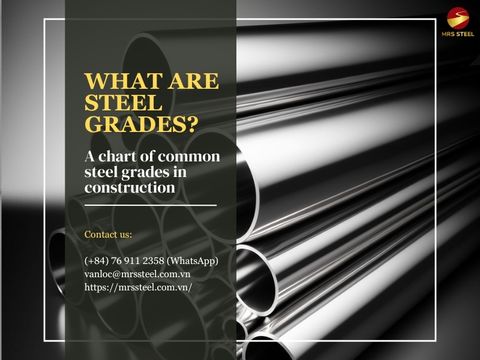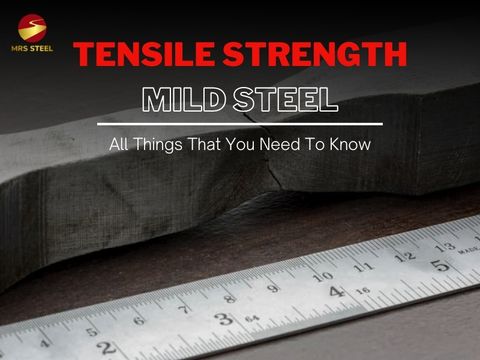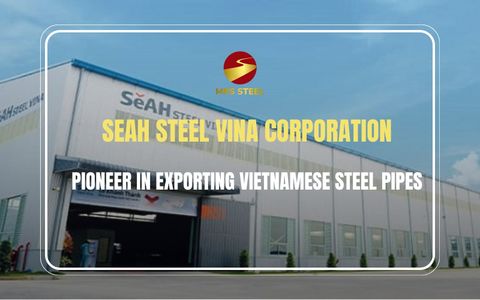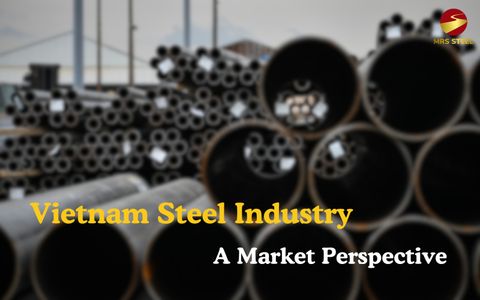Steel vs stainless steel: A comprehensive guide to understanding the A-Z

BlogDate: 24-04-2024 by: Ngoc Cam
MRS Steel has detailed a comparison of steel vs stainless steel, including properties, applications, costs and many other important factors.
Stainless steel and steel are alloy steels with unique strengths and applications. Understanding the difference between these two types of steel is fundamental to choosing the right material for the project.
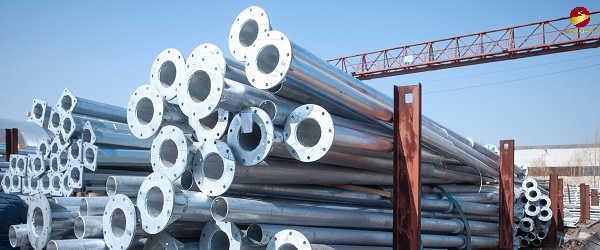
The difference between steel and stainless steel lies in their composition and properties
General introduction to steel vs stainless steels
Steel is an alloy of iron and carbon, combined with a number of other elements such as nickel, molybdenum, manganese, titanium,... to determine the mechanical properties. Steel is a metallic material so it has metallic luster, strong electrical and thermal conductivity. At temperatures of 500-600 degrees Celsius, steel becomes ductile and its strength decreases. At -45 degrees Celsius, steel is brittle and prone to cracking.
Stainless steel is also a type of alloy steel commonly used in life. The difference is that they have a minimum chromium content of 10.5 wt% and a maximum of 1.2 wt% carbon. Thanks to this special composition, stainless steel has outstanding resistance to corrosion and rust.

Stainless steel is generally stronger than conventional steel in various applications due to its unique composition and properties
Learn about the difference in properties of steel and stainless steel
Steel vs. stainless can be based on the features in property of steel below:
Corrosion resistance
Compared to conventional steel, stainless steel has superior corrosion resistance thanks to its 10.5% chromium content. When exposed to outside air, chromium creates a layer of chromium oxide (III) that cannot be seen with the naked eye, so the surface of stainless steel is always shiny. Molybdenum in stainless steel is also highly resistant to corrosion, even in acidic environments.
Strength
Is stainless steel stronger than steel? Steel is a material with high tensile strength ranging from 400 - 1882 MPa, good bearing capacity. Meanwhile, the tensile strength of stainless steel is about 518-827 MPa, with standard strength, heat resistance and hardness.
Therefore, while stainless steel can be strong in some applications, high-carbon steel can have a higher tensile strength than some types of stainless steel.
Ductility
The carbon content in steel is no more than 2.14% by weight. The more carbon in steel, the higher the hardness and durability of the steel. While stainless steel only has a maximum of 1.2 wt% carbon, it is more flexible and easier to shape than conventional steel.
Appearance
Stainless steel has a high chromium content, so it has a smooth, shiny appearance. For applications requiring high aesthetics, stainless steel is a more ideal material than conventional steel.
Magnetism
Usually people still think that stainless steel is a non-magnetic or non-magnetic material. In fact, the structure of the metal will determine whether stainless steel is magnetic or not. Of the 4 groups of stainless steel, only the Austenitic group is non-magnetic and the remaining 3 groups are all magnetic. Therefore, if the stainless steel you are using belongs to the magnetic Martensitic, Ferritic or Duplex groups, then when tested with a magnet, the steel will still be attracted like ferromagnetic materials.

What is the difference between steel and stainless steel?
Steel vs stainless steel: which is the better cost?
The input materials of steel are mainly iron, carbon and some other chemical elements, while the chromium content in stainless steel is very high, further increasing the cost. The steel production process is also simpler than stainless steel, optimizing energy and labor costs. In addition, processing and manufacturing stainless steel requires high expertise and complexity, leading to the price of finished stainless steel being more expensive than steel products.
How is the difference between the applications of steel vs stainless steel
Stainless steel stands out with its resistance to corrosion, rust and extremely high aesthetics, so it can work in many harsh environments such as the petrochemical field, aerospace, marine,... Stainless steel does not contain chemicals harmful to users' health, so it is an ideal material for use in the medical and food industries.
Meanwhile, steel has high mechanical properties, has many different types and uses, so it is applied in a variety of industries such as construction, mechanics, shipbuilding,...
Conclusion on the most distinctive differences
Factors | Steel | Stainless steel |
Key raw materials | Made of iron, carbon and some other metals | Made of iron, chromium and some other metals. |
Strength | High tensile strength, susceptible to corrosion and rust in natural conditions, low heat resistance | Lower tensile strength, easy to shape, extremely good resistance to corrosion and rust. |
Application | Used in civil construction, equipment, automobile components,... | Used in the fields of medicine, food, furniture, chemicals,... |
MRS Steel - Bringing the best Vietnamese steel import experience
Once one of the smallest economies in Southeast Asia, Vietnam has now become leading economic markets in the world, especially in the field of metal import and export. According to Worldsteel 2023 statistics, Vietnam ranked 12th in the world's largest crude steel output with 19 million tons. Many Vietnamese steel enterprises are also in the top 100 largest steel enterprises in the world such as Hoa Phat, Formosa,... Although Vietnam advocates creating many favorable conditions for export, there are still many complex policies, procedures and customs processes that make foreign importers confused and difficult. In addition, how to find a reputable and quality source of Vietnamese steel is also a big problem for importers.
All will be thoroughly resolved if you choose MRS Steel as your import support partner. MRS Steel has more than 12 years of experience in the field of sourcing and supporting customers importing Vietnamese steel from the largest mills. MRS Steel has a team of experienced experts who will answer and advise on issues to help you have the most optimal import plan.
Steel and stainless steel are both the most popular types of steel in the world that help solve material problems in construction. Hopefully this article on the topic of steel vs stainless steel from MRS Steel has helped you understand the characteristics, strengths and applications of both types. Don't forget to contact MRS Steel to ask questions about the Vietnamese products and steel market!




























